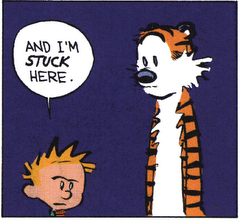"One hardly need add that the Paumacariya is filled with references to Jaina places of pilgrimage, stories about Jaina monks, and Jaina homilies and legends. Furthermore, since the Jainas consider themselves rationalists—unlike the Hindus, who, according to them, are given to exorbitant and often bloodthirsty fancies and rituals—they systematically avoid episodes involving miraculous births (Rama and his brothers are born in the normal way), blood sacrifices, and the like. They even rationalize the conception of Ravana as the Ten-headed Demon. When he was born, his mother was given a necklace of nine gems, which she put around his neck. She saw his face reflected in them ninefold and so called him Dasamukha, or the Ten-faced One. The monkeys too are not monkeys but a clan of celestials (vidyadharas ) actually related to Ravana and his family through their great grandfathers. They have monkeys as emblems on their flags: hence the name Vanaras or "monkeys."
- A.K. Ramanujan in Three Hundred Ramayanas: Five Examples and Three Thoughts on Translation
Funny, that last thing I would have thought about Jains I have met in Mumbai is that they are rationalists. I recall discussing with a long lost friend that Jainism and Buddhism were the Renaissance in Hinduism. Its weird that they have evolved into something , and in some instances, something so militant. If you don't get what I mean, take a walk down Chowpatty one of these days!
- A.K. Ramanujan in Three Hundred Ramayanas: Five Examples and Three Thoughts on Translation
Funny, that last thing I would have thought about Jains I have met in Mumbai is that they are rationalists. I recall discussing with a long lost friend that Jainism and Buddhism were the Renaissance in Hinduism. Its weird that they have evolved into something , and in some instances, something so militant. If you don't get what I mean, take a walk down Chowpatty one of these days!



No comments:
Post a Comment